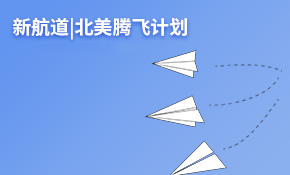“先发制人”的托福阅读法则
最近收到了一些学生的困扰,提到自己平时也比较努力认真,完成背诵词汇与刷题任务,就在这样兢兢业业地刻苦中本以为阅读可以突破上28、29,结果自己却一直卡在21-25这个分数区间,一直上不去?老师有什么好方法?
针对这些词汇语法基础较好但有一定瓶颈的学生,我特地做了研究,究竟什么方法最适用于他们?研究的过程中,我发现他们有时虽然能做对题目,但其实并不是完完全全能理解文章的意思,或者,更清晰一些的表述是,他们并不能完全理解作者的一些表述,以及文章的写作目的,这些学生对于阅读仅停留于做题,而缺乏对于文章背后意义的思考。
于是,我的重点就从简单地研究技巧方法,到如何能够带领学生真正看懂文章的意思。所以才有了今天跟大家见面的新方法,我称之为“阅读先发制人”法。
先发制人,顾名思义,就是在敌人制服你之前就先出招制胜,结合我们的阅读,什么意思?
就是我们在阅读段落内容时就对出题点进行预判,站在一个比题目本身更高的地方去审视为什么要在这里出题,最终,出题点与我们的预判吻合,大大缩减了寻找定位与理解的时间!
这个方法听上去十分高深,但是实践起来其实并没有这么难,今天南京托福培训机构老师就带大家来看一看怎么做。当然,提醒一句,想要真正地融汇贯通需要长期的修炼,一两篇的练习是绝 对不够的!
如何判断出题点?
我们以TPO55中的一篇文章[Mesolithic Complexity in Scandinavia]为例,先来看看第 一段:
[paragraph1] The European Mesolithic (roughly the period from 8000 B.C.to 2700 B.C.) testifies to a continuity in human culture from the times of the lce Age.This continuity, however was based on continuous adjustment to environmental changes following the end of the last glacial period(about12,500 years ago). Three broad subdivisions within the northern Mesolithic are known in Scandinavia. The Maglemose Period(7500-5700 B.C) was a time of seasonal exploitation of rivers and lakes,combined with terrestrial hunting and foraging. The sites from the Kongemose Period(5700-4600 B.C.) are mainly on the Baltic Sea coasts, along bays and near lagoons, where the people exploited both marine and terrestrial resources. Many Kongemose sites are somewhat larger than Maglemose ones.The Ertebolle Period (4600-3200 B.C.)was the culmination of Mesolithic culture in southern Scandinavia.
规律一
关注“被解释的抽象名词”
The European Mesolithic (roughly the period from 8000 B.C.to 2700 B.C.) testifies to a continuity in human culture from the times of the lce Age.This continuity, however was based on continuous adjustment to environmental changes following the end of the last glacial period(about12,500 years ago).
这两句我们看到了一个中心词“continuity”, 前一句提到欧洲中世纪被证实是人类文化从冰河世纪后的延续,后一句立刻展开解释,这种延续,是以持续不断地以适应环境变化为基础的。这两句话,符合我们所谓“有一个被解释的抽象名词”这个点,所以很有可能是出题点。
果然,我们在第 一题中就看到了这样的题目:
1.What can be inferred from paragraph 1 about human life in Mesolithic Scandinavia?
A. People tended to live in smaller groups during the Ertebolle Period than during earlier Mesolithic periods.
B. The areas where it was advantageous to live changed over time as a result of environmental changes.
C. Human groups were less affected by environmental change during the Maglemose Period than during the Kongemose Period.
D. During most of the Mesolithic, people were more dependent on terrestrial food sources than other food sources.
答案显而易见,与我们的预判十分吻合,为B.
我们继续来看第二段:
”
[paragraph 2] By the Ertebolle Period, the Scandinavians were occupying coastal settlements year-round and subsisting off a very wide range of food sources.These included forest game and waterfowl, shellfish, sea mammals, and both shallow-water and deepwater fish. There were smaller seasonal coastal sites, too, for specific activities such as deepwater fishing, sealing, or hunting of migratory birds. One such site, the Aggersund site in Denmark, was occupied for short periods of time in the autumn, when the inhabitants collected oysters and hunted some game,especially migratory swans. Ertebolle technology was far more elaborate than that of its Mesolithic predecessors;a wide variety of antler,bone:and wood tools for specialized purposes such as fowling and sea-mammal hunting were developed.including dugout canoes up to ten meters long.
规律二
段落中最长最难的句子容易是考点!
在这个段落中,其余句子都很好理解,只有一个看上去特别长特别难!不用怀疑,一定是考点!可能考句子简化题,也可能考其他的,但是,万变不离其宗,一定要读懂这个句子!
Ertebolle technology was far more elaborate than that of its Mesolithic predecessors; a wide variety of antler, bone, and wood tools for specialized purposes such as fowling and sea-mammal hunting were developed, including dugout canoes up to ten meters long.
Ertebolle的技术远比它的中世纪祖先来的更为精细;有一系列的鹿角、骨头和木器被发明出来用于一些特殊的用处比如捕猎和捕杀海洋动物,还包括长达十米的独木舟。
规律三
与段落的组织结构有关的内容是重点!
这主要考的是段落的组织结构,哪一句是观点哪一句是展开,我们在读的时候一定要非常清晰。
比如在这里:
These included forest game and waterfowl, shellfish, sea mammals, and both shallow-water and deepwater fish. There were smaller seasonal coastal sites, too, for specific activities such as deepwater fishing, sealing, or hunting of migratory birds.
就解释两种Scandinavians的食物,并解释了前句提到他们如何能够以广泛的食材维持生计的。
而后一句One such site, the Aggersund site in Denmark, was occupied for short periods of time in the autumn, when the inhabitants collected oysters and hunted some game,especially migratory swans.
明显是一个例子,举出Aggersund点就符合他们解释的观点。所以在这里,就有论点-解释-举例这样的句间关系,考点嘛, 就大概率是修辞目的题了。
来看看出题人是否也与我们的预判一致:
2. Why does the author mention the Aggersund site in Denmark and its brief periods of occupation?
A. To suggest that the supply of year- round food sources near earlier settlement sites had nearly
disappeared
B. To give an example of a small, temporary coastal site that took advantage of seasonal food sources
C. To illustrate how small coastal settlements could not last as long as large forest settlements
D. To highlight the fact that none of the Denmark camps were able to be occupied year-round
这是一道修辞目的题,考点也与我们之前判断的一样,问的是例子是支持了那种观点,答案也是显而易见,为B了。
3. Paragraph 2 suggests that before the Ertebolle Period, hunting tools and other Mesolithic technologies
A. were available only in small coastal sites
B. were developed mainly in Denmark
C. were made mainly from animal bones
D. were somewhat simple
考点句与我们的判断一致,问法略有差异,这次没有考句简题,而是suggest(推理题),问我们能从Ertebolle时期推断出之前的技术如何,那么这里考到的是推理题常出的时间推理,还是根据句意理解,既然Ertebolle时期技术比之前精细的多,说明之前没那么细致,所以选的是D。
好的,这就是今天南京托福培训机构老师为大家介绍的“先发制人”阅读法则,大家可以多多练习,跳出思维框架,当然,也欢迎来补充找到的新规律!我们下次见!















